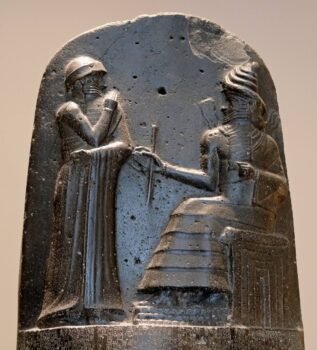The Legacy of Hammurabi’s Code: Laws and Justice
Hammurabi’s Code is one of the most famous and well-preserved legal codes of the ancient world. Written in the 18th century BCE by King Hammurabi of Babylon, this collection of 282 laws offers a fascinating insight into ancient Mesopotamian society, justice, and governance. Its impact has been profound, influencing legal traditions for centuries. But what exactly does Hammurabi’s Code say? Who created it? What is the most famous law? And what about the intriguing Law 143? Let’s explore these questions and uncover some fun facts about one of history’s most significant legal texts.
Who Created the Code of Hammurabi?
Hammurabi was the sixth king of the First Babylonian Dynasty, ruling from around 1792 to 1750 BCE. He inherited the throne of Babylon, then a small city-state, and through military conquests and diplomacy, he expanded his empire across Mesopotamia, bringing stability and prosperity. To maintain order in his vast kingdom, he commissioned a set of laws that would be uniformly applied to all his subjects. These laws were inscribed on a large basalt stele and placed in a public space, ensuring that everyone had access to the legal system.
What Does Hammurabi’s Code Say?
Hammurabi’s Code is extensive and covers various aspects of daily life, including commerce, family relations, labor, property rights, and criminal justice. The code is based on the principle of retribution, often summarized as “an eye for an eye, a tooth for a tooth.” This meant that punishments were meant to fit the crime, ensuring fairness and discouraging wrongdoing.
Some of the key topics addressed in Hammurabi’s Code include:
- Property laws: Regulations about land ownership, rental agreements, and trade.
- Marriage and family laws: Rules governing divorce, dowries, and inheritance.
- Labor laws: Wages, working conditions, and contracts for laborers and artisans.
- Criminal justice: Punishments for theft, assault, and other offenses.
- Slavery laws: Rights and responsibilities concerning enslaved people.
- Consumer protection: Standards for goods and services, including consequences for fraud or poor craftsmanship.
What Is the Most Famous Law in Hammurabi’s Code?
One of the most well-known laws from Hammurabi’s Code is:
Law 196: “If a man has destroyed the eye of another man, they shall destroy his eye.”
This law epitomizes the principle of lex talionis (the law of retaliation), which sought to establish justice by ensuring that punishment was equal to the crime committed. While it might seem harsh by modern standards, this legal system was revolutionary for its time, as it aimed to provide consistency and fairness rather than arbitrary punishment.
What Is Code 143 in Hammurabi’s Laws?
Law 143 in Hammurabi’s Code deals with marital fidelity and the consequences of a wife neglecting her duties or despising her husband:
Law 143: “If the wife of a man, on account of another, has had her husband killed, that woman shall be impaled.”
This law reflects the severe consequences of betrayal and the patriarchal nature of Babylonian society. Women had some rights, such as owning property and conducting business, but they were also held to strict moral and legal standards, especially in matters of marriage and fidelity.
Fun Facts About Hammurabi and His Code
Beyond the legal details, there are several intriguing aspects of Hammurabi and his famous code:
- The Stele Was Lost for Centuries: The original stone pillar inscribed with the laws was discovered in 1901 by French archaeologists in Susa (modern-day Iran). It had been taken there as war booty by the Elamites centuries after Hammurabi’s reign.
- It’s One of the Earliest Legal Codes: While not the first, Hammurabi’s Code is one of the most complete and best-preserved legal codes from ancient history.
- It Inspired Modern Legal Systems: The structure and logic of Hammurabi’s Code influenced later legal traditions, including Roman law and even contemporary legal principles.
- It Recognized Social Classes: The code prescribed different punishments depending on social status—nobles, commoners, and enslaved people were treated differently under the law.
- It Included Minimum Wage Laws: Some of the earliest wage regulations appear in Hammurabi’s Code, dictating how much workers, including ox drivers and doctors, should be paid for their services.
- It Was Meant to Be Read Aloud: The laws were carved in cuneiform script and placed in public spaces, allowing people to hear them read by scribes or officials.
- Hammurabi Claimed Divine Authority: The code begins with a prologue in which Hammurabi states that the laws were given to him by the gods, reinforcing his right to rule and administer justice.
- Not All Punishments Were Physical: While many laws focused on physical retribution, others included fines or restitution to victims.
- It Was Not a Democratic System: While the laws applied to everyone, they reinforced a rigid social hierarchy where nobles received lighter punishments than commoners or enslaved individuals.
- Hammurabi’s Reputation Lived On: His legal legacy lasted long after his death, and he was revered in Mesopotamian culture as a model of righteous leadership.
Hammurabi’s Code remains one of the most fascinating artifacts of ancient civilization, shedding light on how justice was perceived and administered nearly 4,000 years ago. Whether viewed as harsh or progressive, it was a pioneering attempt at creating a structured legal system to govern a diverse and expanding empire. Its influence can still be seen in modern legal principles, making Hammurabi’s legacy one of the most enduring in history.




